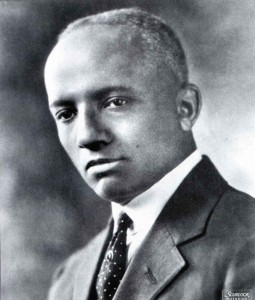
It’s Wednesday aka Hump Day! Today. Today’s open thread is highlighting more than 5 facts.

FACT 1:Before Wally Amos became famous for his “Famous Amos” chocolate chip cookies, he was a talent agent at the William Morris Agency, where he worked with the likes of the Supremes and Simon & Garfunkel.
FACT 2: After a long career as an actress and singer, Pearl Bailey earned a bachelor’s degree in theology from Georgetown University in 1985.
FACT 3: Being mischievous was Thurgood Marshall’s gateway to the law. For punishment, he was forced to copy the Constitution. It eventually piqued his interest.
FACT 4: Langston Hughes’ daddy discouraged him from being a writer and only agreed to pay for his college education if he studied engineering.
FACT 5: Dr. Carter G. Woodson, the “Father of Black History” and the first person of enslaved parents to graduate from an Ivy League university, that announced Negro History Week in 1925 and first celebrated it in February 1926. One of Woodson’s professors had previously told him that “the negro had no history”. Negro History Week was started to counter what Woodson knew as a false, yet popularly believed, claim. The week would grow to become Black History Month. Why February? Woodson chose it because it was the month Abe Lincoln and Frederick Douglass died.
FACT 6: Jazz composer Billy Strayhorn has been instrumental in solidifying the influence of black culture in music and entertainment. Unless you’re a fan of jazz or have parents and grandparents that have are into the genre, you may not be know that Strayhorn, an openly gay man, wrote the classic standards performed by Duke Ellington: “Take the A Train,” “Something to Live For” and the ultimate lounge ballad, “Lush Life”.
FACT 7: In 1598, Isabel de Olvera, a free mulatto, accompanies the Juan Guerra de Resa Expedition which colonizes what is now New Mexico
FACT 8: In 1784, Prince Hall establishes the first black Masonic lodge in the United States. African Lodge #459 is granted a Masonic charter by the Grand Lodge of England.
FACT 9: In 1790, Free African Americans in Charleston form the Brown Fellowship Society. Founded in 1790, the Brown Fellowship Society is the oldest all-male Funeral Society in Charleston, South Carolina.
FACT 10: In 1791, In February Major Andrew Ellicott hires Benjamin Banneker to assist in a survey of the boundaries of the 100-square-mile federal district that would later become the District of Columbia.
The History of The Brown Fellowship Society
James Mitchell, George Bampfield, William Cattel, George Bedon, and Samuel Saltus, all mulatto members of Charleston’s St. Phillips Episcopal Church, founded the Brown Fellowship Society. Although the church was interracial, the attached cemetery was restricted to whites. The Fellowship Society aimed to establish their own cemetery for “brown” African American individuals, believing it would foster a sense of social unity among them. Officially the stated purpose was to provide respectable funerals for Society members, support widows, and educate surviving children.
Determined not to upset the white community, the Society did nothing to help slaves (indeed, some lighter-skinned members were slave-owners themselves) and were careful about whom they admitted to their ranks, which consisted of no more than fifty men at a time. In fact, prospective members were voted on at three meetings before they were allowed to join, and had to pay a hefty, for the time, $50 initiation fee (plus regular dues). The group purchased burial grounds as well as a meeting house.
Typically only free lighter skinned African Americans were allowed to join, but sometimes darker-skinned individuals who had naturally straight hair were permitted as well. All who joined were considered prosperous and a few were wealthy. Most held relatively affluent jobs such as shoemakers and tailors, but were still subject to prejudice from the white community.
Darker-skinned black men, led by Thomas Smalls, formed their own group, The Society for Free Blacks of Dark Complexion, in 1843, and purchased their own burial land. After the Civil War, the Brown Fellowship Society expanded to include more African Americans, including women and those of darker skin, and changed its name to the Century Fellowship Society. The graveyard property was sold in 1945 by descendants of the Century Fellowship Society. In the late 1950s the graveyard was paved over so that a parking lot could be built for Catholic Bishop England High School. In 1990, the graveyard descendants organized to erect a small memorial to their ancestors, who are buried beneath the asphalt.
*** All information courtesy of BlackPast.org and Biography.com***
